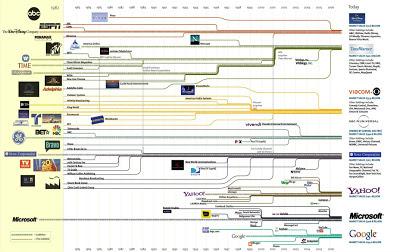 Nearly six decades ago the question of America’s media; newspapers, radio, and an emerging television broadcast medium, came before the Supreme Court in a case involving the First Amendment. The Court ruled that, "the widest possible dissemination of information from diverse and antagonistic sources is essential to the welfare of the public; a free press is essential to the condition of a free society."
In consideration of the SCOTUS ruling, the FCC adotped a cross-ownership rule that barred common ownership of a broadcast station and a daily newspaper in the same market. The rule was designed to promote two of the Commission’s longstanding goals in broadcast regulation – competition and diversity of information sources. The Commission first adopted the rule in 1975, when there were approximately 1,700 daily newspapers, 7,500 radio stations, and fewer than 1,000 TV stations. Three national commercial broadcast networks that had a combined prime time audience share of 95%.
Despite the recognition that a diverse media landscape was essential to American democracy, the profit imperative dictated another direction, so that by 1983, 50 corporations controlled a majority of American media. Now that number is six. And Big Media may get even bigger, thanks to the FCC’s consideration of ending the rule preventing companies from owning a newspaper, and radio and TV stations in the same city.
Nearly six decades ago the question of America’s media; newspapers, radio, and an emerging television broadcast medium, came before the Supreme Court in a case involving the First Amendment. The Court ruled that, "the widest possible dissemination of information from diverse and antagonistic sources is essential to the welfare of the public; a free press is essential to the condition of a free society."
In consideration of the SCOTUS ruling, the FCC adotped a cross-ownership rule that barred common ownership of a broadcast station and a daily newspaper in the same market. The rule was designed to promote two of the Commission’s longstanding goals in broadcast regulation – competition and diversity of information sources. The Commission first adopted the rule in 1975, when there were approximately 1,700 daily newspapers, 7,500 radio stations, and fewer than 1,000 TV stations. Three national commercial broadcast networks that had a combined prime time audience share of 95%.
Despite the recognition that a diverse media landscape was essential to American democracy, the profit imperative dictated another direction, so that by 1983, 50 corporations controlled a majority of American media. Now that number is six. And Big Media may get even bigger, thanks to the FCC’s consideration of ending the rule preventing companies from owning a newspaper, and radio and TV stations in the same city.Current Magazine
 Nearly six decades ago the question of America’s media; newspapers, radio, and an emerging television broadcast medium, came before the Supreme Court in a case involving the First Amendment. The Court ruled that, "the widest possible dissemination of information from diverse and antagonistic sources is essential to the welfare of the public; a free press is essential to the condition of a free society."
In consideration of the SCOTUS ruling, the FCC adotped a cross-ownership rule that barred common ownership of a broadcast station and a daily newspaper in the same market. The rule was designed to promote two of the Commission’s longstanding goals in broadcast regulation – competition and diversity of information sources. The Commission first adopted the rule in 1975, when there were approximately 1,700 daily newspapers, 7,500 radio stations, and fewer than 1,000 TV stations. Three national commercial broadcast networks that had a combined prime time audience share of 95%.
Despite the recognition that a diverse media landscape was essential to American democracy, the profit imperative dictated another direction, so that by 1983, 50 corporations controlled a majority of American media. Now that number is six. And Big Media may get even bigger, thanks to the FCC’s consideration of ending the rule preventing companies from owning a newspaper, and radio and TV stations in the same city.
Nearly six decades ago the question of America’s media; newspapers, radio, and an emerging television broadcast medium, came before the Supreme Court in a case involving the First Amendment. The Court ruled that, "the widest possible dissemination of information from diverse and antagonistic sources is essential to the welfare of the public; a free press is essential to the condition of a free society."
In consideration of the SCOTUS ruling, the FCC adotped a cross-ownership rule that barred common ownership of a broadcast station and a daily newspaper in the same market. The rule was designed to promote two of the Commission’s longstanding goals in broadcast regulation – competition and diversity of information sources. The Commission first adopted the rule in 1975, when there were approximately 1,700 daily newspapers, 7,500 radio stations, and fewer than 1,000 TV stations. Three national commercial broadcast networks that had a combined prime time audience share of 95%.
Despite the recognition that a diverse media landscape was essential to American democracy, the profit imperative dictated another direction, so that by 1983, 50 corporations controlled a majority of American media. Now that number is six. And Big Media may get even bigger, thanks to the FCC’s consideration of ending the rule preventing companies from owning a newspaper, and radio and TV stations in the same city.
